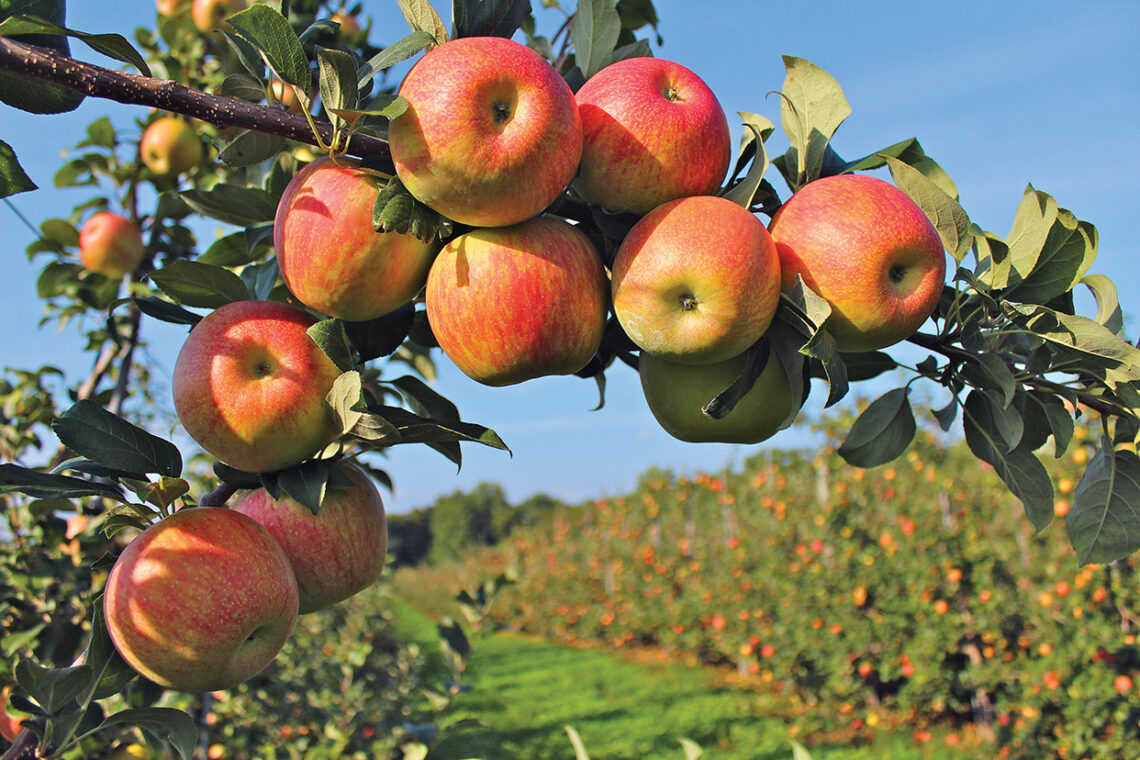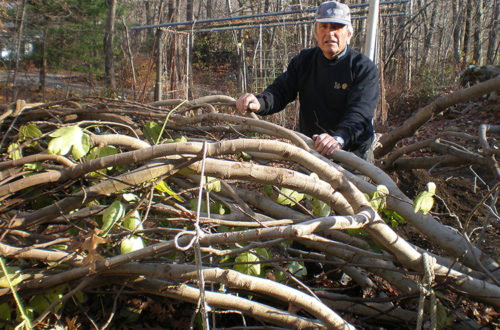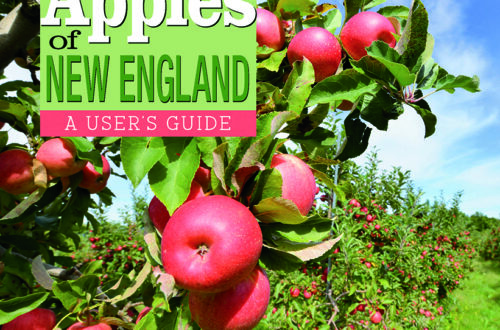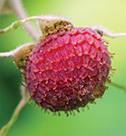By Alan C. Sax & Miles Schwartz Sax
I understand why people fall in love with other people but I don’t really understand what causes people to fall in love with things. Is it hardwired into our brain to find objects that fascinate or that build affinity with the familiar? Or, maybe it’s an evolutionary strategy to harvest the fruits of discovery and be rewarded with a dulcet cascade of dopamine.
Of all the things that people can love, there are a number of us out there whose affections are reserved for all things apples. With their fragrant blossoms, sumptuous fruit, cathedral orchards, and tantalizing ciders, the apple of our eye is the apple that is in hand. Those of us who discover love in apples are devotees to pome fruits, we are apple nerds and find captivation, libation and sustenance in these saccharine orbs of yellow, green and red. This intrigue has forged a partnership between humans and trees that has allowed the apple to travel the world through centuries, creating an ethnobotanical culture along the way.
Apples and people have been bound together for thousands of years. The Tien Shan Mountains in what is now Kazakhstan is where today’s modern apples can trace their lineage to their ancestral home. Bears and horses ate the apples in this region and spread the seeds through a dollop of fertilizer. Humans discovered the few sweet apple trees hidden among the ocean of astringent, unpalatable fruits in the gnarled forests of the Tian Shan region. Through migration and trade, humans spread the seeds of these sweet fruits east toward China and west over the Silk Road.
With each seed carried to a new land, there was hope that the seedling tree would prove to be as sweet as the one from which the seed was born. One of the fascinations of apples is that their seeds, unlike many familiar vegetable varieties, do not produce offspring that are clones of their parents. Apple seeds are heterozygous; their offspring will show varied and contrasting traits compared to those of their parents.
It is a strategy that embraces genetic diversity and gives each seedling a unique mix of characteristics that allows them the best chance to live in new environments. Apples, with their 17 chromosomes and 57,386 genes, provide a plethora of genetic variation. While this strategy of diversification has allowed the wild apples of the world to grow and survive across the northern hemisphere, it poses a challenge to humans wishing to preserve desirable traits like sweet large fruits when growing trees from seed.
When you discover that exceptional, enticing apple you wish to grow at home amongst your other botanical friends, the only way to ensure it will produce the same fruit is by cloning it through grafting. The most common way to do this is to take a slip of a twig or a bud (i.e., a scion) from the tree that you want to reproduce and graft it to another apple rootstock in a way that the bark can connect. If your knife is sharp and you tuck the two pieces together properly, their vascular systems will fuse together as they grow.
When the tree matures, it will yield the same fruit as the desirable one that your scion was harvested from. This means that every McIntosh, one of New England’s favorite apples, has been propagated from the original McIntosh tree. As a result, to preserve the diversity of selected apples (the ones bred for flavor, bountifulness or local adaptation), humans must be involved. The art and skill of grafting has been passed on from generation to generation.
It is proposed that grafting as a technology dates to about 1000 BCE. For the past 3000 years, skilled orchardists have used grafting to pass along outstanding apple varieties. Grafting allowed selected apples to travel with humans as they migrated, instead of relying on the luck-of-the-draw lottery of seed-grown trees.
Early European colonizers like Basque, Scandinavian and Portuguese fishermen may have brought apples to North American islands and coastal regions as early as 1550, leaving discarded seeds to grow. Records from The Dutch West India Company indicate that fruit trees were traded from their Hartford, Connecticut warehouse, the “House of Hope,” as far back as 1639. As the English and other Europeans immigrated to North America they brought with them their knowledge of seed stocks, apples and food cultures from the Continent.
While the horticultural practices of home countries could be transported in the minds of these travelers, the tender branches of apple scion wood could not survive the saltwater voyage and so upon arrival, they relied on their heterozygous seeds.
As these colonizers took over Native American agricultural lands, seedling orchards were established, which renewed the process of apple diversification and selection. From these seedling trees new varieties were discovered, cloned through grafting and named. Humans discovered that different apples were good for cider; fresh eating in season; some stored well; others were especially good for baking, apple butter, drying or as animal feed. Farms and homesteads could benefit from the diversity of apples by having different varieties for specific uses.
By 1790, 94 percent of the population of Connecticut was engaged in agriculture. These homestead farms traded in cheese, apples and other products of the land. With little currency available to these farmers, their agricultural products were “money” and provided capital to trade with. The apple in its fruit form wasn’t the only means of making use of the products of these trees; cider also played an import role in the colonists’ lives.
It is estimated that at the height of agricultural land use in New England, one in 10 farms had a cider mill. Cider was sold, traded and brandy was made by distilling the fermented juice into spirits. The cider produced from these mills would be mildly alcoholic and was drunk at all meals by adults as well as children. Before the development of germ theory and modern sanitation methods, water could be unhealthy for consumption. Cider was safer to drink than water because the fermentation process killed infectious micro-organisms.
Roxbury Russet is considered by many to be the first named apple cultivar (i.e., a specific selected type) in the United States having been discovered and cultivated by Ebenezer Davis in Roxbury, Massachusetts. It was an outstanding ‘keeper’ and was also renowned for making a high-quality cider. By 1649, it was grown in Connecticut. Major General Israel Putnam, a hero of Bunker Hill, grew it on his farm in Pomfret, Connecticut. By 1796, his grandson, also named Israel Putnam, took 23 apple varieties out to Marietta, Ohio, including Roxbury Russet, where it became known as Putnam’s Russet. From there it was spread throughout the Ohio River Valley and beyond.
In the 1800s, the development of apple varieties and their uses took off and as transportation improved and commercial nurseries were developed, taking advantage of improved transportation. Traveling salesmen went farm-to-farm and catalogues with beautiful pictures enticed both home and commercial buyers to plant apples. Varieties such as Maiden’s Blush and Westfield Seek-No-Further arrived at local markets. Many hyperlocal varieties that fit certain niches were never known outside of their holler, town or county.
With the twentieth century came a dramatic reduction in the number of apple varieties available to either commercial or home orchardists. The age of agricultural conformity and conglomeration had arrived and apples needed to fit the mold of modern grocery stores and tractor-driven farming. Slowly, over time, consumers were left with fewer apple varieties, often imported from outside their local areas.
Regional knowledge about the old apples, their uses and their history was forgotten and relegated to oral histories and historical societies. Many old homesteads and farms in Connecticut were abandoned or consumed by development. Forgotten apples are still growing in wilds of second-growth forests and hedgerows of land once cultivated. While agricultural land has diminished in our region, the love of apples and a new generation of farmers, homesteaders and fruit explorers as emerged.
Matt Kaminsky, author of The Wild Apple Forager’s Guide and the Gnarly Pippins blog (Pippin being a term for a wild apple), encourages everyone to go out and hunt for wild apples in the fall. Growing up in Stafford Springs, Connecticut, abandoned orchards were his playground as a child. Eventually, he learned to graft and renovate old apple trees. Matt recommends that if you have land, try planting an heirloom apple tree. You will be planting a bit of New England history and helping to maintain our agricultural genetic diversity.
If you are the curious and patient type, try planting some seeds from your favorite apple just to see what you get when it fruits in seven to 10 years. You’ll have bought a ticket for the apple lottery that people have been playing for thousands of years.
Eliza Greenman, self-described fruit explorer, heirloom and cider apple geek and owner of the Hog Tree Farm in Virginia, is involved in a Connecticut orchard renovation that has family roots. When Mystic’s Denison Pequotsepos Nature Center wanted to restore their apple orchard, they looked on the internet and found Eliza Greenman had the requisite skills and interest.
The Center is located on Greenmanville Avenue and was part of a farm her long-lost cousins, the Greenman Brothers, ran to feed the workers at their shipyard in Mystic. With the help of a grant from the Lord Foundation, they have been busy cutting through the invasive old field successional scrub and have freed an overgrown apple and pear orchard.
While they had hoped to liberate 70 fruit trees, they ended up finding over 200 on the three-acre site. Aside from examining the trees, flowers and fruit, these apples will be sent for genetic testing to determine their parentage and whether they are heirloom varieties or chance seedlings.
The results of the study may shed light on varieties in the orchard and consequently whether they might be intentionally planted or chance seedlings. This will shed light into understating what fruit varieties were grown in the Mystic area and used to make cider, vinegar, or feed the workers.
John Bunker of Palermo, Maine, is known as the king of heirloom apple sleuths. He is a noted author on hunting for and identifying old apples. His work has inspired many people to start hunting for old apples in the lost fields and forest edges of New England. His recent book, Apples and the Art of Detection, describes the twisted trails he followed and interesting characters he ran into in his efforts to save hundreds of old varieties. His work also includes the establishment of the nursery arm of Fedco Seeds from Clinton, Maine, where one can buy heritage trees through mail order.
He is also the mastermind of the Maine Heritage Orchard growing at Maine Organic Farmers and Gardeners Association (MOFGA) headquarters in Unity, Maine. The orchard is a conservation demonstration planting that maintains apple varieties unique to the state.
The act of growing and exploring apples is a tradition that has been passed down through the agricultural history of our region and across the world. There are many ways to engage with this heritage whether it be sampling wild apples growing in a quiet corner of your yard, reveling with fermenting aficionados at Franklin County Cider Days (ciderdays.org)in Massachusetts or going on a pick-your-own apple adventure with your family. As the weather cools and the splendor of leaf season sets, take the opportunity to enjoy a peck or pint of Connecticut-grown apples and cider.
Editor’s Note: For local sources of apples and cider check out ctapples.org
Alan C. Sax
In his retirement, Alan is active in a variety of apple pursuits. He currently is the chair of Franklin County Cider Days where he leads the program committee. Al is the lead investigator of the Lost Apples of the Quabbin Project, searching for wild and heritage apples in the Quabbin Reservoir watershed. He is an award-winning cider maker, dries and bakes apples and whose applesauce is legendary! He has a BS from the University of Michigan, School of Natural Resources. The Sax family has been involved in apple research, breeding and culture over the last four generations.
Dr. Miles Schwartz Sax
Miles is the director of Connecticut College Arboretum. He is responsible for advancing the mission of the institution through strategic planning, landscape management, teaching, research, curation and fundraising. Miles holds a PhD from Cornell University and has focused on research in the fields of environmental horticulture, tree selection and evaluation, stress physiology and rare plant conservation. He has expertise in the genus Malus (apple), gained by researching, curating and maintaining the international species apple collection at the Arnold Arboretum of Harvard University.





